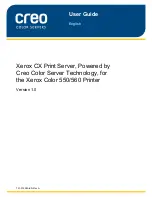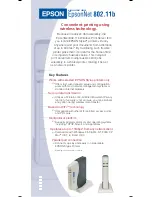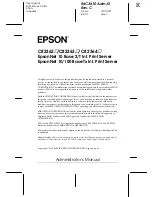Reviews:
No comments
Related manuals for PowerEdge R640

990
Brand: IBM Pages: 88

CX PRINT SERVER 550
Brand: Xerox Pages: 166

DIGITAL Server 9100 Series
Brand: Digital Equipment Pages: 68

BACnet/IP Server-SUNWAYS
Brand: IntesisBox Pages: 5

W131-X30
Brand: Gigabyte Pages: 2

SI-2PS
Brand: Abit Pages: 56

UniServer R2700 G3
Brand: H3C Pages: 226

QSSC-S99K 2U
Brand: QUANTA Pages: 177

SUPERSERVER 1018D-73MTF
Brand: Supero Pages: 124

ftServer 2500
Brand: Stratus Pages: 106

C12C823912 - Net 2 Print Server
Brand: Epson Pages: 20

C823622A - Interface Type B Print Server
Brand: Epson Pages: 3

C12C800WN (Net 802.11b Wireless Print Server)
Brand: Epson Pages: 2

C32C824461 - UB R03 Print Server
Brand: Epson Pages: 86

C82362
Brand: Epson Pages: 279

C823622A - Interface Type B Print Server
Brand: Epson Pages: 2

PowerVault
Brand: Dell Pages: 396

PowerVault 600
Brand: Dell Pages: 180

















